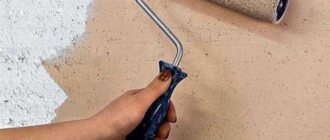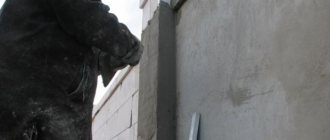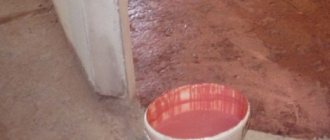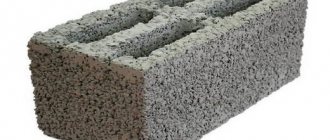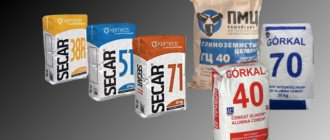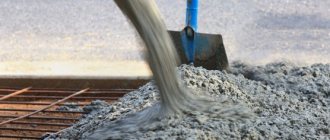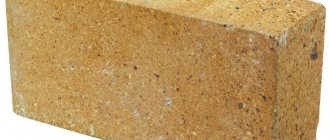Application of Macroflex foam
Professional builders, as well as people who are quite far from construction and repair work, can say with confidence that such building material as Makroflex polyurethane foam is well known to them and not only from hearsay. This polyurethane foam has a fairly wide range of applications. It is actively used as a sealant when connecting roofing structures, when installing windows and doors, and for sealing various joints, cracks and holes. It is also used to create soundproofing screens and to seal passages and pipe openings. At the same time, Macroflex foam, reviews of which are mostly positive, has long occupied its niche among popular and best-selling materials for construction and repair.
Macroflex foam, widely used in construction, has technical characteristics that clearly distinguish it from other sealants. It has an undeniable advantage over other similar materials, namely its quite affordable price, with traditionally high Finnish quality.
Types of products
Makroflex product is used at all stages of construction. The need for application arises when installing window and door blocks, insulation, pipe fastening, filling cavities with building materials, etc.
The products are presented in the following types:
- Polyurethane foams. This is the most common product of TM Macroflex. They combine price and quality. The foam is produced in several versions: standard in three types; premium line with improved properties; foam cement, replacing one bag of cement; 2 by 2 foam with special characteristics and two application methods (gun, tube); fire resistant. All foams have a specific application and a special purpose.
- Sealants. Products are produced in several types: sanitary, universal, neutral. Depending on the type, painting is allowed after drying, which makes the repair complete.
- Adhesive compositions. They are designed to connect dissimilar surfaces. The release is represented by several lines, differing in the specific application. The line was also created based on organic compounds; it does not have a distinctive odor.
View this post on Instagram
Ready for the foam party #renovation chronicles #macroflexPosted by Sergey Goodic (@goodic) Jul 26, 2020 at 4:18 am PDT
Technical characteristics of Macroflex foam
The declared technical characteristics of Macroflex foam make the product attractive to installers and builders. It is noted that the volume of mixture output from the cylinder is from 25 to 50 liters (the figure depends on temperature conditions). Macroflex foam has the following parameters:
- primary expansion – 2 times;
- primary hardening – 60 minutes;
- density indicators - 25-35 kg/m³;
- fire resistance value – B3 (according to DIN 4102);
- tensile/compressive strength indicators - 3 N/cm² (if the material is two-component, then 5 N/cm³).
Each type of foam has its own qualities. Standard and Professional do not have protection from UV rays, but the professional “Premium” has this property; it is not afraid of ultraviolet radiation. The latter variety is more elastic and therefore more durable.
Technical data
| Appearance | A viscous mixture that foams when leaving the container and hardens under the influence of air humidity |
| The basis | Polyurethane |
| Smell | Light specific odor during hardening, no odor when hardened |
| Density | |
| Cure time until tack disappears | 7 … 16 min (20°С/ RH > 30%) |
| Curing time | OK. 1 h (93% RH) to 18 h (15% RH) max 24 h |
| Secondary expansion | less than 40% |
| Expansion pressure | |
| Dimensional stability | +- 5% |
| Max 7.5% EN ISO 12087 (1997) | |
| Thermal resistance of hardened foam | from - 55°C to + 90°C |
| Fire hazard class of hardened foam | B3 (DIN 4102) |
| Flash point of hardened foam | > +400°C |
| Conductivity of water vapor | 7 x 10 -10 kg/(m²*s*Pa) EN ISO 12086(1997) |
| Water vapor permeability | 1.8 x 10 -13 kg/(m²*s*Pa) EN ISO 12086(1997) |
| Long-term water absorption by cured foam | Max 10% EN ISO 12087(1997) |
| Tensile strength | min 3 N/cm² |
| Compressive strength (10% compression) | min 3 N/cm² |
| Thermal conductivity of hardened foam | 0.030 W/m K |
Macroflex polyurethane foam is a material with the release of which began the history of the company of the same name, which has been part of the Henkel Group since 2003. Today, the range of products manufactured under the Makroflex brand also includes sealants (silicone, acrylic, polyurethane and bitumen), adhesives, cleaning fluids, and tools. The Macroflex brand has been represented in Russia since 1994.
Properties
This one-component polyurethane polyurethane foam has the property of hardening to a semi-elastic state due to exposure to air humidity. It is simple and safe to use. A special feature of this self-expanding foam is its ability to double in volume as it hardens. This property must be taken into account when applying it to the surface. It is important that professional Macroflex foam can be applied to almost any surface, dry or wet. The main thing is that they are not icy or covered with frost.
Main characteristics of Macroflex 750
Macroflex polyurethane foam has a one-component structure. It hardens quickly and has excellent adhesion (sticking, adhesion) to wood, metal and concrete surfaces. Macroflex has good heat and sound insulation, moisture resistance and durability.
Macroflex is used for installation and repair of window openings, door frames, for sealing cavities, seams, joints and cracks. It is used in the construction of screens for sound insulation and thermal insulation, helps in the installation of building parts and seals connections.
When extruded from a 750 ml can in which foam is stored and sold, the material expands, reaching 100% of the original volume and gradually hardens. This achieves sealing of joints, cavities and cavities when installing door and window openings. By doubling in size during hardening, the foam can deform structures if they are made of soft material. Take this nuance into account while working.
Another important characteristic of foam is that this material does not tolerate solar radiation, so it is necessary to protect the filled areas to avoid destruction of the sealant.
The material is also suitable for harsh weather conditions.
Flaws
Macroflex foam, like any material, has its drawbacks, which must also be taken into account when using it. In particular, it cannot be used in places exposed to direct sunlight, as it tends to degrade under the influence of ultraviolet radiation.
Our website provides recommendations on how to properly apply Macroflex foam. The presented photo and video instructions clearly explain the sequence of foam application, manipulation of the balloon, storage conditions and use of this material. It is important to remember that hardened foam can only be removed mechanically. If the instructions are followed correctly, the foam applied to the surface will last a long time, be durable and safe.
Mode of application
Before use, the container must be kept at room temperature for at least 12 hours. Shake the can thoroughly for 15 seconds. Remove the plastic cap from the can and securely attach the applicator gun to the can. Always keep the can upside down during operation. The surfaces to be treated must be clean and dust-free. They may be wet, but not covered in ice. Wetting the surfaces and foam improves the adhesion and porosity of the cured foam. It is not recommended to remove the gun until the cylinder is completely used. When installing a new cylinder, it should be shaken thoroughly. Unscrew the empty can and immediately replace it with a new one, making sure that there is no air left in the gun. If you do not intend to change the canister, remove the foam from the gun using MAKROFLEX CLEANER. Hardened foam can only be removed mechanically.
Connection sizes
The maximum width of joints when used should be up to 4 cm wide and up to 10 cm deep. It is recommended to fill the joints layer by layer, sprinkling each layer with water.
Safety precautions
Contains diphenylmethane 4,4'-diisocyanate. Harmful if inhaled. Affects the eyes, respiratory system and skin. May cause skin irritation. In case of contact with eyes, rinse immediately with plenty of water and consult a doctor. In case of contact with skin, wash with plenty of soap and water. Due to the release of gaseous compounds, ensure good ventilation during operation. All gases - CO2, propane, butane - are heavier than air. Foam MAKROFLEX prof. does not destroy the earth's ozone layer. The contents of the cylinder are under pressure. Heating above +50°C may cause an explosion. Do not open or burn an empty cylinder. Do not spray the contents of the cylinder onto fire or hot objects! Keep out of the reach of children!
Varieties
Polyurethane foam Macroflex 750 is available in professional and semi-professional versions. The difference lies in the characteristics, configuration and packaging.
Professional Macroflex foam has a reduced coefficient of secondary expansion, and the container is equipped with a mount for a specialized gun and holds 750 ml of material.
Semi-professional packaging is equipped with a tube that facilitates the release of sealant. If you take a break from working with semi-professional foam for more than 30 minutes, you will have to clean the nozzle, which will require a cleaner.
Types of foam are also classified according to the seasonal purpose of Macroflex. Summer, winter and universal (all-season) foam is produced. The first is used at temperatures above +5 degrees. Winter involves use down to -18.
The technical characteristics of these three types of foam sealant are different. The winter type of sealant is suitable for work at low temperatures, but at the same time the expansion coefficient and material consumption are reduced. Winter Macroflex can be applied to damp materials covered with frost.
The difference between universal foam is the high consumption of sealant, accelerated polymerization and hardening. They also work with the universal Macroflex at sub-zero temperatures - about ten degrees, without warming up the can. But do not forget that in the winter season the material takes longer to harden.
Spray can attachment - pistol
Choosing the right polyurethane foam
To avoid mistakes and rework when carrying out repair and installation work, choose the right polyurethane foam. First, decide on the objectives of using the sealant. What are you planning to foam? Where will the work be carried out - outdoors or indoors? At what temperature? Calculate the approximate volume of required material based on the technical specifications. Think about what kind of cleaner to prepare.
Strengthening the window frame
Be sure to ask to see the product certificate when purchasing. This document confirms the compliance of the purchased sealant with accepted standards. The seller must have such a certificate, since polyurethane foam is subject to sanitary and epidemiological control. The conclusion of Rospotrebnadzor certifies the compliance of hygienic characteristics with established standards. The certificate confirms the absence of ozone-depleting elements in the foam and provides a fire-resistant characteristic. A recommended cleaner may be indicated.
Requirements for Macroflex, as well as for other types of polyurethane foam (for example, Soudal), include the following technical conditions and properties:
- Fire-resistant packaging and sale in the form of aerosols;
- When applied to the surface, polymerization and hardening must occur within the time period indicated on the packaging;
- Required level of adhesion (adhesion) to ensure installation work;
- When drying, the foam should be elastic, not crumble or collapse;
- The secondary expansion coefficient must correspond to that indicated in the certificate and on the packaging.
